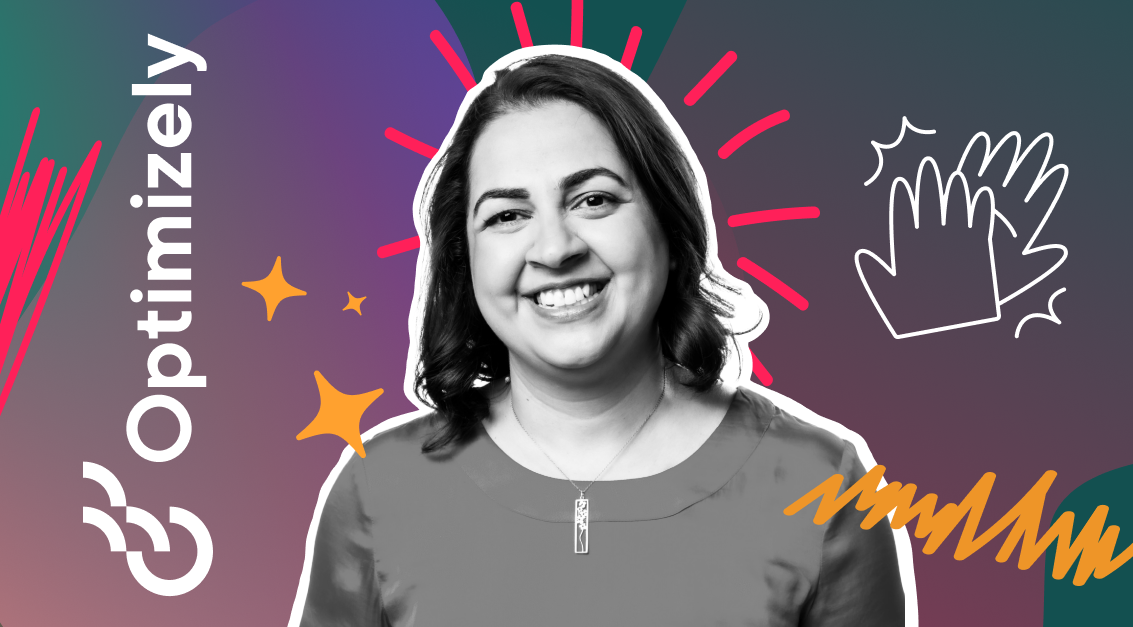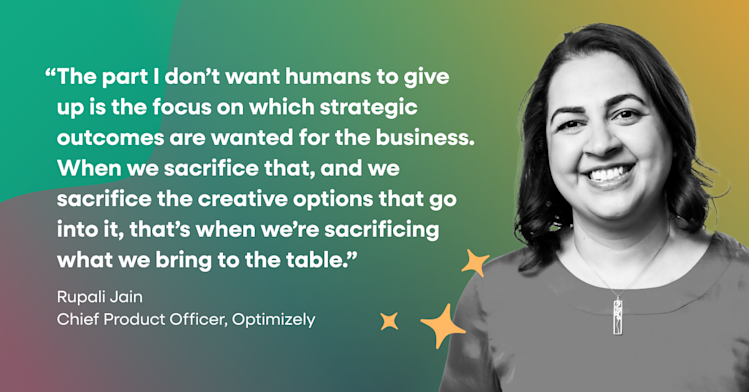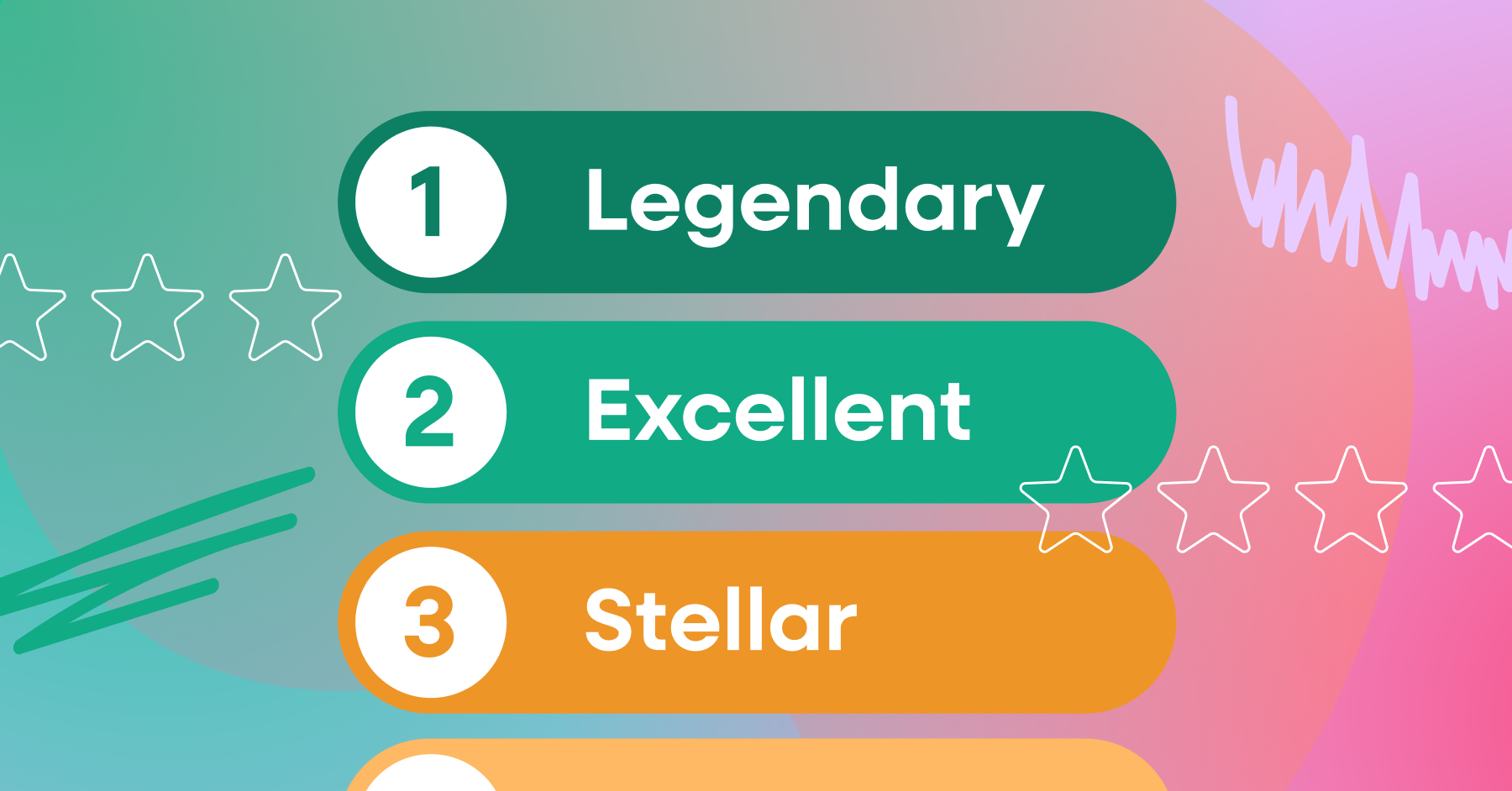Rupali Jain, Chief Product Officer at Optimizely, has built her career around the principle that successful products are grounded in a deep understanding of the customer. Throughout her time leading product teams, she’s helped organizations grow through change, take worthwhile risks, and stay focused on the outcomes customers care about.
In a recent conversation with the Fullstory team, she shared her thoughts on building a culture of innovation, where AI fits into experimentation, and how it could reshape the way teams take risks. Here are some key takeaways from that discussion.
Innovation is a muscle
Leaders face a lot of pressure to innovate—and to do it quickly. But Jain believes innovation is a muscle that must be built over time.
“When I think about balancing speed of execution with innovation,” said Jain, “to me, that’s a false dichotomy. Innovation is the delivery of capabilities; it’s not just the shiny new objects. You’re making a portfolio of bets that pay off over time.”
To build the muscle of innovation, you don’t have to lift heavy from day one. In fact, Jain recommends starting small.
“You need to have a forcing function, and you need to think forward,” she said. “Maybe you're only looking one quarter ahead. Try thinking two quarters ahead. Ask yourself: what's the one thing you're going to spend 10% of your time on that’s going to pay off two quarters from now?”
Kill your darlings for demand
Prioritization frameworks can help teams organize their thinking, but even using the most rigorous model won’t guarantee that a product or feature will succeed. “You could do all of the frameworks—the two by twos, RICE, everything,” said Jain. “At the end of the day, you have to remember that it's a hypothesis, not a prediction.
What really matters is how customers respond once something is live. “Then you can see whether it's a push or a pull. Are you seeing adoption, or are you pushing and pushing and pushing?”
She acknowledged that it’s natural for people to get attached to the things they are working on. “Those are our babies. We like them. We want them to succeed. But the demand signal is what answers the question of what's going to do well.”
AI compatible, not consumed
Experimentation is valuable, but it’s often time-consuming and tough to prioritize when resources are limited. Jain sees AI as a way to make it more manageable.
“[AI] starts by giving you ideas. Then, it can analyze and give you things to experiment on, which is a huge friction point. And then it can summarize the results,” she explained. “It can give you a really good head start and remove friction from the equation. It's about speeding up the process so you can do more.”
She was also clear about the line she doesn’t think AI should cross.
“The part I don’t want humans to give up is the focus on which strategic outcomes are wanted for the business,” she said. “When we sacrifice that, and we sacrifice the creative options that go into it, that’s when we’re sacrificing what we bring to the table.”
Taking risks can be a reward multiplier
Near the end of the discussion, Jain recalled a moment from early in her career when she spoke with a product leader about her path. He told her he admired how willing she was to take risks. The comment surprised her.
“I was like, I don’t understand—isn’t that just what you do?” she laughed.
She realized that not everyone approaches risk the same way—and not everyone feels like they can even take risks. Whether because of circumstance, hubris, or a mix of both, she’s always believed things will turn out okay. Even if she falls flat on her face, she trusts she’ll be able to get back up.
“Because of the way I take risks,” she said, “it makes me a better leader in some ways. And it’s actually been one of the key drivers to my success.”
She also acknowledged that for many teams, taking risks feels like a luxury. The stakes are high, resources are limited, and getting it wrong can be expensive. But Jain believes AI will shift that equation.
“I think we’ll become more risk-taking,” she said. “People don’t take risks because the downside is too high. If you can control the downside, suddenly you have the ability to take significantly more risks. When you take more risks, you can get better outcomes.”
The path forward
“If I think five years into the future, and I think about AI becoming a part of our daily lives, I don’t exactly know where the world will be,” Jain noted. “But we will see a seismic shift from where we are today.”
Jain's approach to product leadership offers a valuable blueprint: build innovation methodically, stay relentlessly focused on customer outcomes, and don't shy away from calculated risks. The tools will change, and the path to success might twist and turn, but as long as you stay focused on those principles, you’ll keep moving in the right direction.






